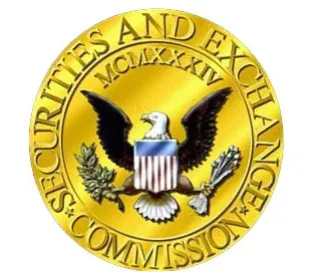The costs of compliance may soon be reduced for several hundred reporting companies. On June 28, 2018, the Securities and Exchange Commission (SEC) adopted amendments which, among other things, revised the definition of “smaller reporting company” (SRC) to relax the qualifying thresholds under either a public float test or a new revenue test. These amendments become effective on September 10, 2018.
For more information, see the SEC’s implementing release here as well as the Division of Corporation Finance’s new Small Entity Compliance Guide here.
Purpose of the Amendments
According to SEC Chairman Jay Clayton, the amendments are in line with the SEC’s priorities to facilitate capital formation by decreasing barriers to access while also maintaining investor protection. The SEC has estimated that nearly 1,000 additional reporting companies will be eligible to qualify as SRCs in the first year under these amendments. Although a sizable minority of these are currently “emerging growth companies” that already benefit from scaled disclosure requirements, the continued applicability of these reduced disclosure requirements is expected to benefit those companies phasing out of emerging growth company status.
The SEC estimates that making use of these reduced disclosure requirements would reduce the number of burden hours to prepare public disclosure documents, as well as reduce related costs. For example, it has estimated that applying these rules would decrease burden costs associated with filing an Annual Report on Form 10-K by an average of approximately $70,000. This cost reduction could very well alter private companies’ cost-benefit analyses associated with potentially going public and encourage companies previously deterred by compliance costs to do so.
SRC Qualification Tests
After the final rule becomes effective, each company will initially apply the new test, as of the measurement date of the last business day of its second fiscal quarter (even if that date has passed as of the effective date of the amended rule). A company will initially qualify as an SRC if it has:
-
A public float of less than $250 million; or
-
Annual revenues of less than $100 million and no public float or a public float of less than $700 million.
Furthermore, a company filing an initial registration statement will make its initial determination in connection with filing using a measurement date within 30 days of filing and may redetermine its status under the public float test at the conclusion of the offering based on actual shares sold. In all cases, companies must reevaluate annually whether they continue to qualify as SRCs as of their measurement dates.
To avoid companies entering and exiting SRC status based on minor fluctuations in public float, the requalification thresholds are set at 80 percent of the initial thresholds. Once a company has determined that it does not qualify as an SRC, it will only become an SRC if it has:
-
A public float of less than $200 million if it previously had a public float of $250 million or more; or
-
Annual revenues of less than $80 million, if it previously had $100 million or more of annual revenues and less than $560 million of public float if it previously had a public float of $700 million or more.
Reduced Disclosure Requirements for Smaller Reporting Companies
SRCs are afforded disclosure accommodations not available to more established companies or those with larger public floats. Some of the scaled disclosure permitted to SRCs includes:
-
Three, rather than five, years of business description disclosure.
-
Two, rather than three, years of financial statements and corresponding MD&A disclosure.
-
More limited executive compensation disclosure, such as:
-
Compensation information for three, rather than five, executive officers.
-
Two, rather than three, years of compensation information for executive officers.
-
Omission of compensation discussion and analysis and certain executive compensation tables, CEO pay ratio disclosure, and narrative descriptions of certain compensation policies and practices.
-
The amendments did not amend the thresholds for “accelerated filers” and “non-accelerated filers.” Therefore, though significantly more companies are expected to qualify as SRCs, those with a public float of $75 million or more may continue to qualify as “accelerated filers” and remain obligated to file annual and quarterly reports on that shorter timeline, as well as to obtain the auditor attestation required under Section 404(b) of the Sarbanes-Oxley Act. Chairman Clayton has directed the SEC staff to consider possible additional changes to the accelerated filer definition that may promote capital formation by reducing compliance costs but maintaining investor protections.
Corporation Finance’s compliance guide clarifies that a company newly qualifying as an SRC after September 10, 2018, has the option to use the scaled disclosure in its next periodic or current report due after September 10, 2018, or transactional filings without a due date filed after September 10, 2018.
****
For decision-makers at public companies, now is the time to determine whether they qualify for SRC status and, if so, whether and how to refine and streamline their processes in light of the disclosure requirements. Decision-makers at private companies should consider: (1) would your company, or a sector thereof, be able to avail itself of the SRC rules, and (2) does the reduced disclosure have a meaningful impact on your decision to go public?
Aggeliki Delimaris and Steven Schwartz assisted in the preparation of this article.









 />i
/>i


